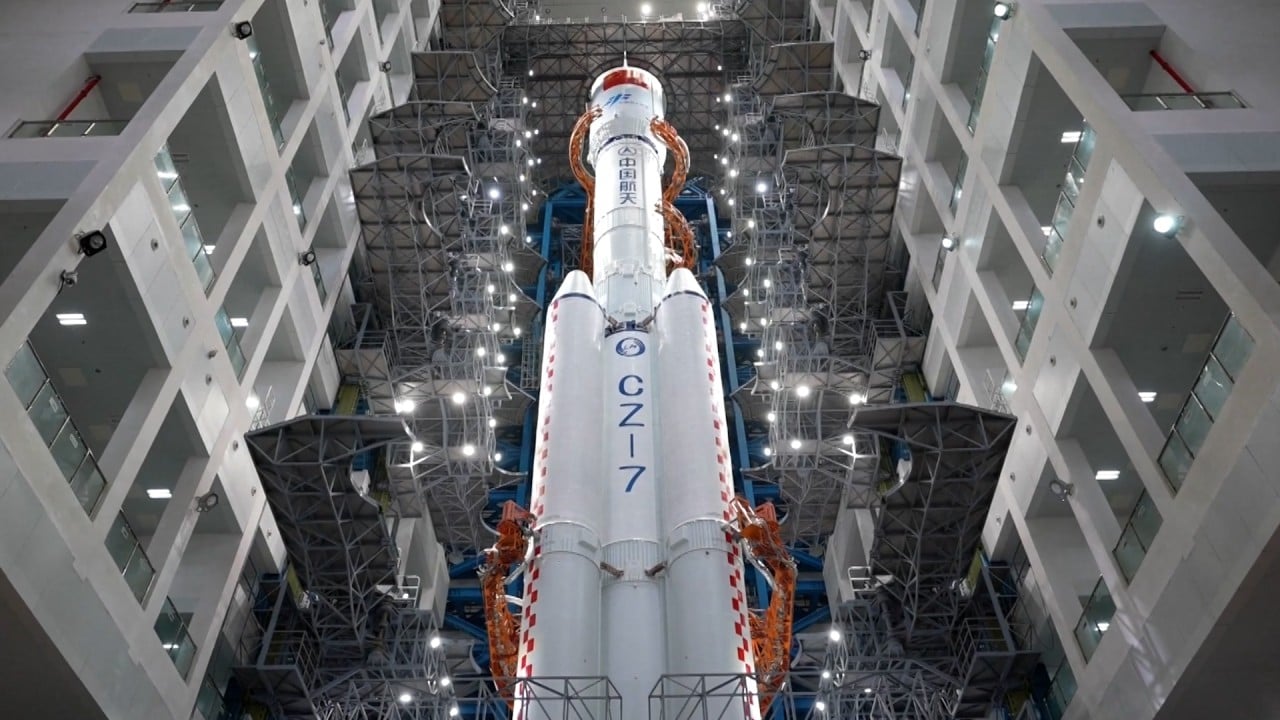Its latest rocket failed to send a high-resolution imaging satellite into orbit. The company made the announcement six hours after the 12.59pm Beijing time lift-off from the Jiuquan satellite launch centre in the Gobi desert.
“Abnormal performance was detected during the flight of the rocket. The specific reasons are being further analysed and investigated,” Galactic Energy said on its official WeChat account.
In a video seen by the South China Morning Post, the rocket fired at least two flames before ascending and disappearing into the clouds.
A rocket engineer in Beijing, who asked not to be named because he is not authorised to speak to the media, said it appeared to be second or third-stage engine breakdown.
China sends record 41 satellites to join Jilin-1 hi-res constellation
China sends record 41 satellites to join Jilin-1 hi-res constellation
In its WeChat statement, Galactic Energy “sincerely apologised” to the mission’s customers and the “friends who have cared about and supported us”.
Advertisement
“We remain in reverence for space technologies and will work hard to identify the cause and organise Ceres-1’s return to ensure continued success of launch missions in the future,” it said.
The failed mission is the first major setback for the 20 metre (65ft 7 ins) long, four-stage, solid-fuel rocket, which has become one of the best-performing commercial rockets in China since its maiden flight in November 2020.
Earlier this month, in a first for China’s private space sector, a Ceres-1 lifted off from a mobile sea platform off the coast of Shandong province, placing four satellites into low Earth orbit as part of an Internet of Things constellation.
Its latest mission was to deliver a Gaofen-04B satellite to the Jilin-1 constellation, China’s first – and currently the world’s largest – commercial remote sensing system, with more than 100 satellites in orbit.
Advertisement
The Gaofen-04B, built by Chang Guang Satellite Technology (CGST) in Jilin province, northeastern China, was designed for the Jilin-1 constellation, with a lightweight imaging system and a reported resolution of better than 50cm.
Jilin-1 is expected to grow to 300 satellites by 2025, providing high-resolution imaging services from land resources surveys to disaster relief planning and smart city building.
Advertisement
Construction of the Jilin-1 constellation started soon after CGST was established in 2014 as an offshoot of the Changchun Institute of Optics, Fine Mechanics and Physics under the Chinese Academy of Sciences.
Previous Jilin-1 satellites have been launched by a variety of state-owned and private rockets, including Long March, Kuaizhou, and Hyperbola. While a number of the Kuaizhou and Hyperbola missions failed to reach orbit, all Long March launches were successful.
US’ space industry is ‘most advanced’ but China may have it beat in 1 measure
US’ space industry is ‘most advanced’ but China may have it beat in 1 measure
In June, a Long March 4D rocket set a national record for the most satellites lifted in one go, when it delivered 41 Jilin-1 Gaofen-06As into low Earth orbit.
Advertisement
He Xiaojun, chief designer of the 06A, told state media in June that the company hoped to have 138 satellites operating in the Jilin-1 constellation by the end of this year.
Thursday’s Ceres-1 launch was China’s 44th orbital mission of 2023 and the first failure for the country’s space programme this year.
Advertisement


